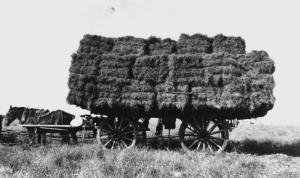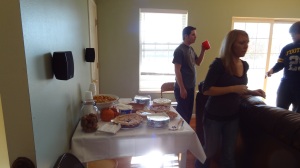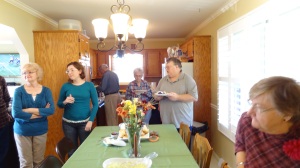Today’s topic is Agriculture business. I am an Ag Economist by way of College Education and Ag Business is near and dear to my heart. We are not, however, going to be talking about buying and selling (well not much), or prices, or modeling the economic forecast for the next beef cycle.The topic ‘du jour” is Pinterest! I know, Pinterest sounds about as far from a guy’s Ag Business topic as I could get. Just read on and maybe I will change your mind.
First, some discussion on the Economic environment pertaining to Ag businesses. I am talking about people with a differentiated product to sell. That cuts out Farmers who raise beef cattle just like the beef cattle down the road or Dairy Farmers or Corn/ Soybean Growers. Their products are GREAT products! But, they are homogeneous to everybody  else’s corn, beans, milk, or steers. I am talking about companies or individuals who profit from setting their products and/ or services above others of the same type by quality or uniqueness or location. “My Blueberry farm is closer and I stay connected to you during the year.” “My horseshoeing business is high quality and timely.” “The livestock I sell for show purposes are higher quality with better genetics.” These entities profit from differentiating their “product” as being more desirable than competing products. That is where Pinterest can come in.
else’s corn, beans, milk, or steers. I am talking about companies or individuals who profit from setting their products and/ or services above others of the same type by quality or uniqueness or location. “My Blueberry farm is closer and I stay connected to you during the year.” “My horseshoeing business is high quality and timely.” “The livestock I sell for show purposes are higher quality with better genetics.” These entities profit from differentiating their “product” as being more desirable than competing products. That is where Pinterest can come in.
Pinterest is a Social Medium. It has grown very quickly from it’s start in 2010 to become a worldwide platform enjoyed by millions of people as this Wikipedia site states. Pinterest is all about images only. The platform is based on storing images of things you like on your own “board/ boards”. These images can be of anything relating to your product; what it is, how its used, and what your customer can do with it. You can add recipes, descriptions, prices, and any other information pertinent to your audience to enrich their experience. You can come back to these boards later and see these images and follow up on the ideas they represent. Other people can also “follow” you and see your boards (only if you allow this). This makes for fast, easy, and very efficient sharing of information. I see it as a “collective” kind of media where everyone is filing and sharing information in a very visual and interactive style. I benefit from other people who have identified information I like and have already filed that information where I can easily visualize and access it.
Anything you Pin maintains it’s link back to the website it has been Pinned from. The Pinners I have talked to mostly Pin directly from the Pinterest site. HERE IS A HUGE FACT FOR BUSINESS PINTEREST SITES! The people I have talked to are HUGELY turned off by self promotion and commercialism. Make your site interesting by pinning more than just your product itself. Think beyond selling your “stuff”. Add Value! Solve Problems! Be an Information Source, not a sales brochure! You can add a “Pin it button” to your website to make it extremely easy for site users to Pin your content. The more others Re-Pin your stuff, the more your stuff gets shared around the web! For businesses, there is a new and different kind of Pin called a “Rich Pin” that businesses can particularly use. Rich Pins update their contained information in real time. Article Pins include story information to entice people to become more engaged in your product. Product Pins include Real Time pricing and availability information that changes on their home board when you update it on your website. Recipe Pins include all the information to prepare the beautiful food you showcase with your product. There are even more Rich Pins that may pertain to your business site depending on what you do. You can find out this information on the Pinterest site just like I did. These can do wonders for creating interest and engagement with your customers.
How does this relate to Ag Business? Pinterest has Business accounts.These are different from personal accounts. One way they are different is that business accounts have access to analytics. Your business can track how many people Pin from your website, see your own Pins, and click on your content. You can set a particular time frame and graph all of these numbers for easy visual interpretation. You can also find out which Pins people like the most, who else interacts with these Pinners and what these Pinners Pin alongside your images. All of this can be used to tailor your website to appeal more to what your users like on both your business website and your business Pinterest boards.
“Boards” are the basic way information is stored and organized on your Pinterest site. Evaluate what your customers want and who your customers are and create multiple boards that appeal to these categories. It is very easy to add boards. There is literally a panel that says “Create New Board”! My Pinterest site has Boards for Rural Beauty,  Home Gardening, Farm Equipment, and Farming. The more ways you can appeal directly to different tastes, the more ways you will attract and engage more customers. Be specific and direct to multiple people at the same time with multiple boards. This is the Great benefit of the internet. You can multi-task with one site that directly appeals to multiple people.
Home Gardening, Farm Equipment, and Farming. The more ways you can appeal directly to different tastes, the more ways you will attract and engage more customers. Be specific and direct to multiple people at the same time with multiple boards. This is the Great benefit of the internet. You can multi-task with one site that directly appeals to multiple people.
This multi-tasking is hugely increased by linking your Business Pinterest site to your OTHER Social Media and Internet sites. Link your website, your Pinterest site, your Facebook page, and your Twitter feed together! When you post to any one of these sites, make that become an item of interest on all of these other sites! Create more news! This gets all of your sites out there more often and gives that many more opportunities for your customers to see your information and get into your information stream! A huge bonus is that more traffic and more links makes your information appear higher on Search Engine results. The higher you show up on these search engines, the more likely customers are to find your product!
Business Pinterest sites have “Best Practices” just like any other business tool. 25 Mistakes businesses make on Pinterest is a great article about the right and wrong things your business should do on your website. Danielle Cormier has done a fantastic job of putting together basic things like including your business information (i.e. name and clear logo in your Profile) to following other businesses (a rising tide lifts all ships, shared links leads to shared customers) to advanced ideas (allowing collaborators to Pin to my boards again spreads the wealth). Anyone with a business Pinterest site should immediately check out this link and save it. This is priceless information gathered together in one place.
Some of the things great Pinners do is laid out here. Be picky about who you follow on your Pinterest site, “drill down” on the things you Pin to find out more about who you are Pinning and what they like, and add more information to your Pins. This will make your site more useful both to you and to your followers. Quality control is always a good thing. Make your business site the best it can be and keep it that way every day! Finding out more information by drilling down on your Pins and using the available Business Analytics will allow you to find out what your customers like best and how to change your website and Pinterest Boards to become more appealing.
The bottom line is that Pinterest can be a great tool to market your product. Your product has to be something that benefits from marketing by being differentiated and unique in some way. Create great content and customers will do the job of spreading the word for you. Make the Internet work for you and your business. Hey, even if you don’t have a business, Pinterest is great fun! It is not “just for girls” either! Anyone who has an interest or hobby can benefit from the collaboration and collective organization Pinterest offers. Get out there and give it a try. I think you’ll love it.























